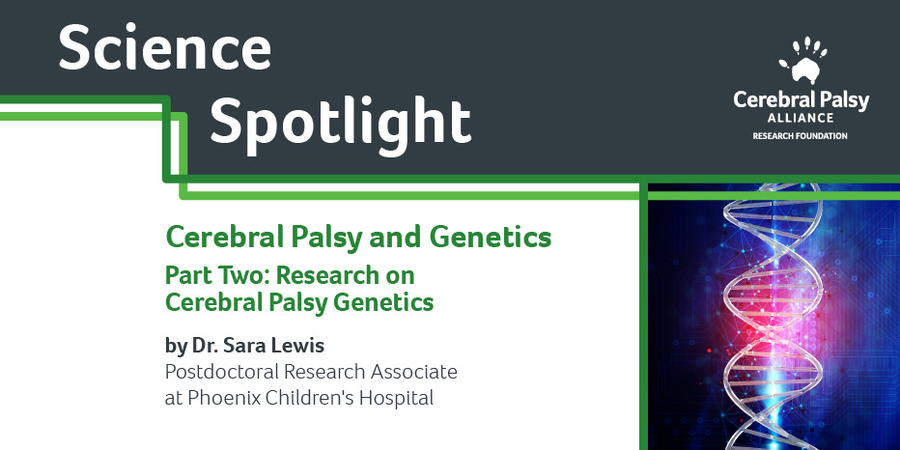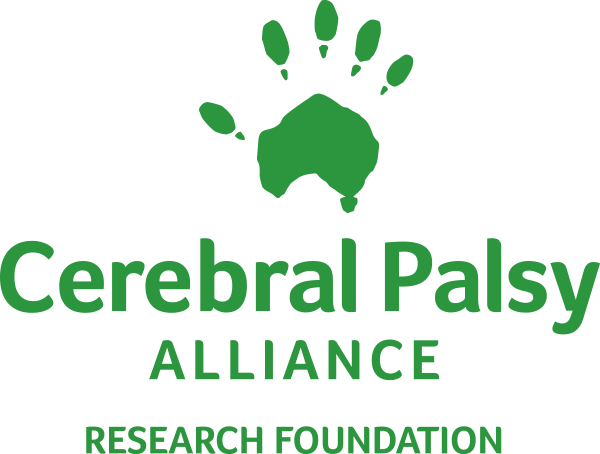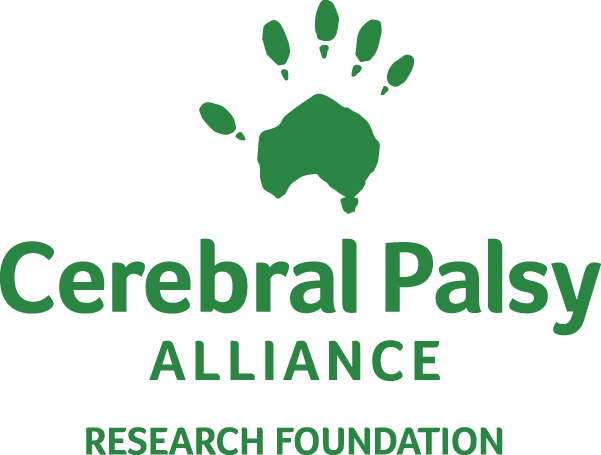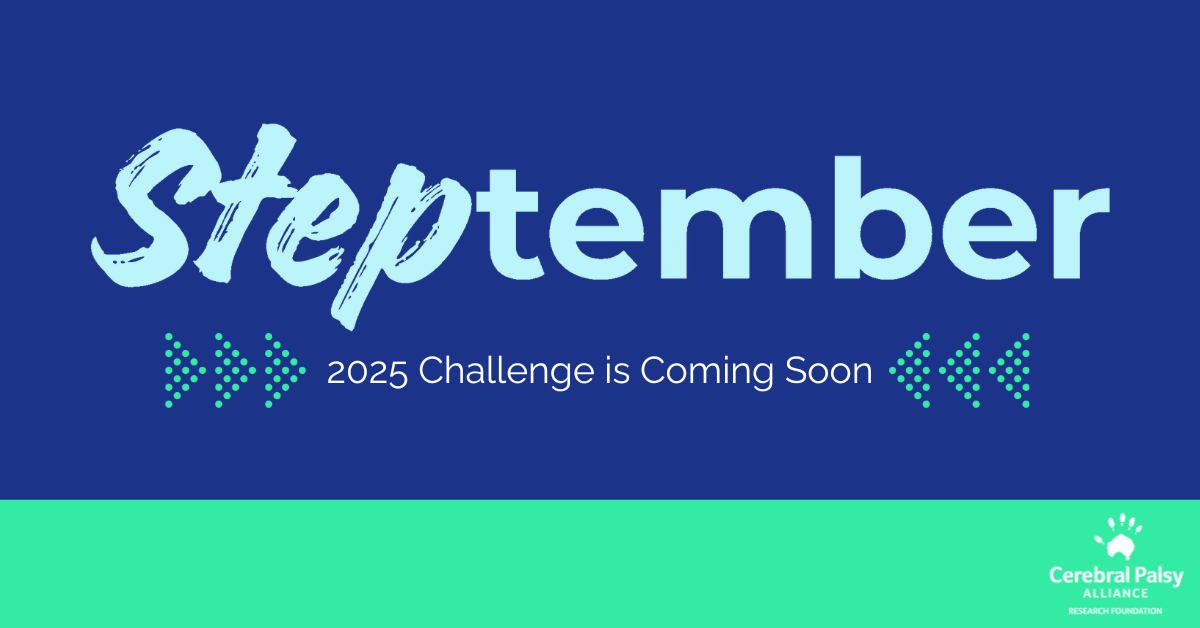
Science Spotlight: Cerebral Palsy and Genetics
Part Two: Research on Cerebral Palsy Genetics
By Dr. Sara Lewis
Check out the first part of this series on cerebral palsy and genetics.
Although we know that genetic variants can contribute to disabilities of the nervous system, finding the responsible genetic factors continues to be challenging. For a long time, genetic conditions that exhibited motor delay with cognitive or other features were described using terms that excluded cerebral palsy (CP). This is because at the time, CP was perceived as only being due to injury during pregnancy, birth, or early development, and this bias caused CP to be overlooked for genetic studies for many years. However, some families with multiple children with cerebral palsy discovered clearly causal gene variants.
The scientific community is now reexamining the idea of genetic contributions to CP.
Several studies have been published using large groups of patients with CP. Parents of the affected individual are also studied in comparison to find new (de novo) variants. Newly arising variants are an important clue that this genetic cause could be an explanation for a person’s CP.
Many genetics studies use whole exome sequencing (WES). The exome is the part of the gene that’s the code for making proteins, and exomes and make up 1% of the genome. In WES, DNA is extracted and then gets copied many times. These copies are then sorted to match the known human genome, which creates a single sequence and the ability to see if there are any mismatches from the known genome.
When parents are sequenced at the same time, researchers can also see if there are mismatches between an affected child and their parents, which is how de novo variants are found.
Whole genome sequencing (WGS) is also being used to identify variants in people with CP. WGS has the ability to detect changes in regions of the DNA that regulate when and where the protein is made, which is known as gene expression. Other studies use microarrays to detect copy number variants, or deletions or duplications of parts of the genome. A microarray binds known sequences of DNA and can to quantify the relative amount of DNA in different parts of the genome.
Bioinformatics — a branch of science at the intersection between biology, computer science, and statistics — are used to describe characteristics of any genes or variants found that may be contributing to someone’s cerebral palsy. With bioinformatics, scientists can draw on large sets of data to make predictions about biological relationships and functions. Bioinformatics can look at how damaging the variant change would be to the protein structure, ability to interact with other proteins, or typical function. Bioinformatics can also be used to judge if the variant is likely responsible for the person’s CP and to describe characteristics that candidate genes have in common — what’s their function? Where and when are they active, such as in the brain during development? Are they known to cause other conditions?
Additionally, new candidate genes can be studied in a model organism like fruit flies (Drosophila). A research paper by Jin et al. found many candidate genes from a group of 250 people with CP. Most genes hadn’t been previously described for human disease and little was known about their function. Researchers performed a genetics screen in Drosophila with mutations in these genes and then measured how far the flies walked in a timed race compared with typical flies. 80% of these candidate genes decreased the flies’ movements, suggesting that many of the genes being found in patients with CP could be important for regulating the development of motor abilities.
There are numerous efforts underway to identify genes which can cause cerebral palsy and their function. Future articles in this series will examine those research findings and the impact on research and clinical applications.
About the Author: Dr. Sara Lewis is a Postdoctoral Research Associate at Phoenix Children’s Hospital working with Dr. Michael Kruer to identify genetic causes of cerebral palsy. She received her PhD in Neuroscience in 2015 with an emphasis in genetic neurodevelopmental disorders. Her work integrates human genetics with the fly model to study how genes leading to movement disorders changes in the brain. Her work also addresses the challenges implementing genetics findings in the clinical environment. Her research is funded by CPARF.
Article cited: Jin SC, Lewis SA, et al. Mutations disrupting neuritogenesis genes confer risk for cerebral palsy. Nat Genet. 2020 Oct;52(10):1046-1056. doi: 10.1038/s41588-020-0695-1. Epub 2020 Sep 28. Erratum in: Nat Genet. 2021 Mar;53(3):412. PMID: 32989326; PMCID: PMC9148538. https://www.nature.com/articles/s41588-020-0695-1
Wed 21 May 2025
Are you ready for STEPtember 2025? We’re officially in double digits — CPARF is celebrating 10 years of funding groundbreaking cerebral palsy research and driving innovation forward. And there’s no better way to mark this milestone than with our biggest, boldest STEPtember yet. Thanks to you, STEPtember has grown into a global movement that powers […]
Thu 15 May 2025
Celebrate Your Birthday with Purpose: Start a Fundraiser That Changes Lives Birthdays are for joy, reflection, and connection — and now, they can help fund groundbreaking research, fuel innovation in assistive technology, and create lasting change for people with cerebral palsy and other disabilities. Celebrate your special day by starting a customized birthday fundraiser to […]





